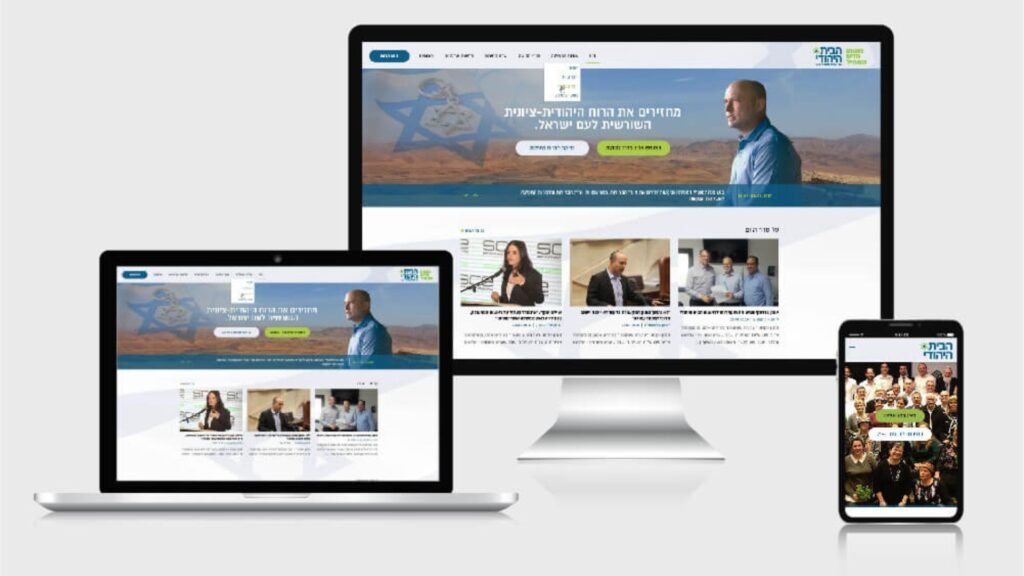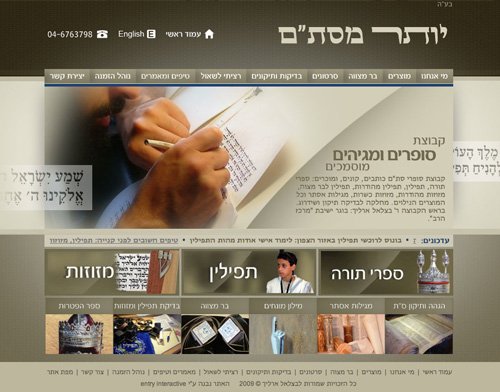For Jewish educational institutions, a well-designed website is crucial in providing information, resources, and engagement opportunities for students, parents, and the broader community. Balancing traditional Jewish values with modern web design functionality ensures that the site is both culturally resonant and user-friendly. This blog post will guide you through key considerations and best practices for Jewish web design tailored to educational institutions, helping you create an effective and engaging online presence.

Essential Design Elements for Jewish Educational Websites
Incorporating Jewish Traditions
Cultural Imagery and Symbols: Use traditional Jewish symbols, such as the Star of David, menorahs, or Torah scrolls, subtly within the design. These elements should be integrated in a way that enhances the educational focus rather than overwhelming the content.
Heritage Colors and Fonts: Employ color schemes and fonts that reflect Jewish heritage, such as blue and white or traditional Hebrew calligraphy. These design choices can create a cohesive look that resonates with the institution’s cultural identity.
Educational Resources and Tools
Interactive Learning Tools: Incorporate interactive tools such as digital libraries, online courses, and educational games. These features enhance the learning experience by providing engaging and accessible resources.
Event Calendars and Schedules: Include an interactive calendar that highlights important dates, such as Jewish holidays, academic events, and community activities. This helps keep students and parents informed and involved.
Enhancing Usability and Engagement
User-Friendly Navigation
Intuitive Menus: Design clear and straightforward navigation menus that allow users to find information quickly. Group related content into logical categories and ensure that key sections, such as admissions, curriculum, and contact information, are easily accessible.
Search Functionality: Implement a robust search feature that allows users to quickly locate specific information. Include filters and autocomplete options to enhance search efficiency and user experience.
Mobile Optimization
Responsive Design: Ensure that your website is responsive and performs well on various devices, including smartphones and tablets. A responsive design adapts to different screen sizes, providing a seamless experience for all users.
Touch-Friendly Elements: Design touch-friendly buttons and interactive elements that are easy to use on mobile devices. This includes ensuring that clickable areas are large enough and that forms are easy to complete on smaller screens.
Balancing Tradition with Modern Functionality
Integrating Cultural and Modern Elements
Design Harmony: Integrate traditional Jewish elements with modern design features in a harmonious way. Use cultural symbols as accents rather than focal points, and combine them with contemporary typography and layout styles to create a balanced and visually appealing site.
Functional Features: Incorporate modern web functionalities such as online registration, virtual classrooms, and multimedia resources. Ensure that these features are seamlessly integrated with the traditional design elements to provide a cohesive user experience.
Enhancing User Engagement
Personalized Content: Offer personalized content based on user preferences and behavior. For example, provide tailored recommendations for educational resources, upcoming events, or community activities.
Community Interaction: Include features that facilitate community interaction, such as forums, discussion boards, or social media integration. These tools help foster a sense of connection and engagement among students, parents, and faculty.
Best Practices for Jewish Educational Web Design
Clear and Consistent Branding
Unified Identity: Maintain consistent branding throughout the website, including colors, fonts, and imagery. This helps reinforce the institution’s identity and ensures a professional and cohesive appearance.
Cultural Sensitivity: Ensure that all design elements respect and reflect Jewish cultural values. Engage with community members or cultural experts to review design choices and provide feedback.
Accessible and Inclusive Design
Accessibility Standards: Follow web accessibility standards to ensure that your site is inclusive for users with disabilities. Implement features such as alternative text for images, keyboard navigation, and readable fonts.
High Contrast and Readability: Use high-contrast color combinations and legible fonts to enhance text visibility. Ensure that all content is easily readable and accessible to users with varying visual capabilities.
Effective Call-to-Actions
Clear CTAs: Design clear and compelling calls-to-action (CTAs) that prompt users to take specific actions, such as applying for admission, registering for events, or donating to the institution.
Persuasive Messaging: Use persuasive language and design elements to encourage users to engage with CTAs. Highlight the benefits of taking action and create a sense of urgency when appropriate.
Examples of Effective Jewish Educational Websites
Case Study 1: Jewish Day School’s Interactive Portal
Overview: A Jewish day school’s website features an interactive portal with access to educational resources, event schedules, and community forums.
Design Elements: The site incorporates traditional Jewish imagery in a subtle manner, with a clean, modern layout. Interactive tools, such as virtual classrooms and event registration, enhance the user experience while maintaining cultural relevance.
Case Study 2: Jewish Learning Institute’s Resource Hub
Overview: The Jewish Learning Institute’s website serves as a resource hub with online courses, multimedia content, and community engagement features.
Design Elements: The site blends modern web functionalities with traditional design elements. High-contrast colors and readable fonts ensure accessibility, while personalized content and community interaction features foster engagement.
Conclusion
Designing a website for Jewish educational institutions requires a thoughtful approach that balances tradition with modern functionality. By incorporating cultural elements, ensuring usability, and enhancing engagement, you can create a site that effectively serves students, parents, and the broader community. Following best practices in web design, such as clear branding, accessibility, and effective CTAs, will help you build a robust online presence that reflects the institution’s values and supports its educational mission.




